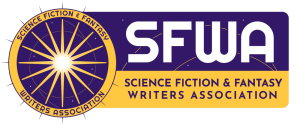by Gwynne Garfinkle

Pop culture such as movies, TV shows, music, and graphic novels can be a great source for poetic inspiration. A poet can critique, explore, and riff on a pop-culture work they love (or hate!) or even use it as a jumping-off point for autobiographical writing. This article will discuss strategies for writing poems generated by pop culture.
Filmic Facets
One good place to start is to choose a movie you’d like to be in conversation with. Maybe the film has a character you find intriguing. An element of the film—images, a line of dialogue, or the soundtrack—may have stuck with you. Perhaps the film raises questions you’d like to address. Maybe you want to argue with the film.
The poems in Dorothea Lasky’s book The Shining luxuriate in the imagery (mazes, twins, an ax) of the Kubrick film. Often, the speaker of the poems is Wendy Torrance; sometimes it is Jack Torrance; sometimes Lasky herself enters the filmic landscape.
The impetus of Sonya Taaffe’s ghost poem “A Long Time Afterward” is a movie character: Johnny Ryan, played by Wendell Corey in Desert Fury (1947). Taaffe says, “He haunts the end of the film and kept on haunting me past it.”
Childhood Remembrances
When I use pop-culture elements as poetic inspiration, I often choose works that I first encountered as a child—for example, The Wizard of Oz, Bewitched, and classic Universal monster movies. Such material can have a particular creative charge. It’s something that sparked your imagination early on, when you were still learning basic things about the world.
I first saw the 1975 film The Stepford Wives when I was young. Some years ago, when I watched it again, it occurred to me that the children of Stepford would need a lot of therapy when they found out their mothers had been replaced by robots. This idea prompted me to write my poem “Misogyny.” As the title indicates, the poem explores a real-life issue that the film raises.
Comic Connections
In a series of prose poems, Jack B. Bedell uses the DC Comics character Swamp Thing to write about environmental issues in lyrical and surprising ways (e.g., “Swamp Thing Watches the Sugar Cane Burn from the Edge of the Marsh” and “Swamp Thing Has a Change of Heart About Invasive Species”). About the series, Bedell says, “Those comics were really my first introduction to environmentalism as a kid, and writing ecopoems from Swamp Thing’s perspective has been a blast.”
Blending Sources
One useful technique is the juxtaposition of pop-culture material with unrelated elements in your poem. The interplay between disparate elements can generate considerable energy. Brandon O’Brien’s collection Can You Sign My Tentacle? includes a series of poems in which Lovecraftian monsters ask for the autographs of Black entertainers like Kendrick Lamar and Lord Kitchener. In the author’s note, O’Brien says that he wrote the first poem (“Hastur Asks for Donald Glover’s Autograph”) “mostly on a lark—a semi-comic juxtaposition between the weird, surreal, often hostile relationship the media has with one particular musician and actor, and the similarly weird, surreal, hostile lens through which one of science fiction’s most beloved mythologies would view that same person based solely on their body.”
Autobiographical Elements
You can also write autobiographically about pop culture. In “Ode to the Sailor Moon Transformation Sequence,” Rita Mookerjee recounts hurrying home from the first grade to watch Serena transform on TV. The poem rhapsodically describes the sequence and adds: “I decided that this is what religion looks like.” Using pop culture in this way can ground the fantastical in your emotional reality, as well as give you a fresh understanding of your own past.
Exercises
Here are some exercises to try:
1. Think of one of the first movies you ever saw—one that generates a strong emotion. Rewatch the movie. Take notes. Try to remember any details about your first viewing of the film and write those down. What particularly struck you when you first saw it? Did you misremember anything? Next, freewrite for ten minutes. Are there any words, phrases, or sections in what you’ve written that you might use in a poem? The poem might be explicitly about the film, or it might go someplace completely different.
2. Write a poem about that same movie, using a formal constraint: for example, a sonnet, pantoum, or acrostic. Or write about the movie with the most elevated language you can muster, then write about it in an ultra-slangy, colloquial way. Or use the style of a writer you like.
3. Pick some small aspect of that movie (e.g., a minor character or a striking line of dialogue) and use that to develop a poem.
4. Choose a movie that you think is in some way terrible but nonetheless can’t help but love. Then think of two or three interests of yours: butterflies or baking or pro wrestling or the six wives of Henry VIII. Write a poem that includes all these elements.
Final Thoughts
Something to keep in mind is that not all readers (or editors, for that matter) will be familiar with the work you’re referencing. You might include an author’s note to provide context. Beyond that, if a poem’s language, imagery, and sonic qualities are engaging, these should carry the reader along, even if they haven’t encountered the work that inspired your own. Maybe the poem will intrigue the reader so much that they’ll want to look up your source material.
Whichever pop-culture material you choose to incorporate in your work, have fun with it and let it take you somewhere unexpected. In an interview, the author Dodie Bellamy says of her use of pop culture elements, “The self is so enmeshed in culture that your cultural experience becomes like a memory of something that happened to you. I don’t see personal and cultural experience as separate.” Incorporating pop culture into your poetry is a way to connect with this material—and the emotions it evokes—on a profound level.
Explore more articles from SPECULATIVE POETICS
 Gwynne Garfinkle lives in Los Angeles. Her collection of short speculative fiction, Sinking, Singing, was published in 2024 by Aqueduct Press. She is the author of a novel, Can’t Find My Way Home (2022), and a collection of short fiction and poetry, People Change (2018), both available from Aqueduct. Her work has appeared in such publications as Strange Horizons, Worlds of Possibility, Fantasy, Uncanny, Escape Pod, Apex, and Not One of Us.
Gwynne Garfinkle lives in Los Angeles. Her collection of short speculative fiction, Sinking, Singing, was published in 2024 by Aqueduct Press. She is the author of a novel, Can’t Find My Way Home (2022), and a collection of short fiction and poetry, People Change (2018), both available from Aqueduct. Her work has appeared in such publications as Strange Horizons, Worlds of Possibility, Fantasy, Uncanny, Escape Pod, Apex, and Not One of Us.
